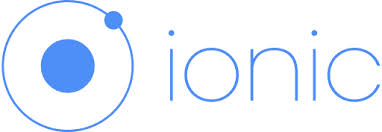 Ionic is an open source front-end framework for development of hybrid mobile apps. Ionic is both a CSS framework and a Javascript UI library. It is built on top of AngularJS to provide the application structure, while Ionic itself focuses on the front-end and UI interactions of your application.
Ionic is an open source front-end framework for development of hybrid mobile apps. Ionic is both a CSS framework and a Javascript UI library. It is built on top of AngularJS to provide the application structure, while Ionic itself focuses on the front-end and UI interactions of your application.
Ionic concentrates on standards compliant code and optimizes user experience by applying Responsive Web Design principles. It is easy to work with, since the only knowledge you’ll need are basic web technologies such as HTML, CSS, and JavaScript. Nothing more, nothing less. You’ll need only one command to create, build, test, and deploy your Ionic apps onto any platform.
Ionic takes care of performance and behavior on the latest mobile devices using some DOM manipulation and hardware accelerated transitions. Ionic apps are very fast because of their simplicity. Consistent UI does not include unnecessary shadows, rounded corners, gradients, etc. Although it may not look native, clean HTML5 and CSS3 code ensures speed.
Ionic’s core was written with SASS, so it has easily customized variables and mixins. Ionic provides simple yet powerful set of components and widgets that can become building blocks of rich user interface. Extensibility is achieved via CSS or creating Angular directives (custom HTML elements) and controllers. Using widgets is as simple as writing a line of HTML code. Such custom HTML elements include header and footer bars, buttons, form elements, a list with customizable items, grid elements, and much more.
Ionic needs AngularJS at the moment, if you want to use its full potential. Apart from directives, Ionic applies Angular’s touch recognizers, view animation logic, HTML sanitation, and asynchronous communication. Ionic also offers Controllers to improve configuration and interaction.
Modifying layout with Ionic is similar to working with Twitter Bootstrap or Zurb Foundation. It is easy to customize without intruding into app’s functionality. Ionic was designed to be displayed smoothly and beautifully on all modern mobile devices. It provides clean and functional interface using mobile components and great icon pack, interactive paradigms and excellent typography with amazing extensible base theme.
As for the disadvantages, this framework is still young, so third party plugins or extensions are not available yet and Ionic does not support device APIs. No desktop support either, since Ionic is meant for hybrid mobile applications. Although content will be displayed nicely on desktops, it will be optimized for mobile. Also Ionic was not intended for mobile website development. There are no native packaging tools for Ionic apps, so it is better to use external ones, like PhoneGap, Cordova, or Trigger.io, that Ionic was tested with.
Ionic as well as AngularJS is spread under the MIT license. It provides a straightforward and convenient way of building rich apps regardless the size so that developers will need to write less code and spend less time to produce high quality apps. Get to know more about its power and flexibility by visiting ionicframework.com.
